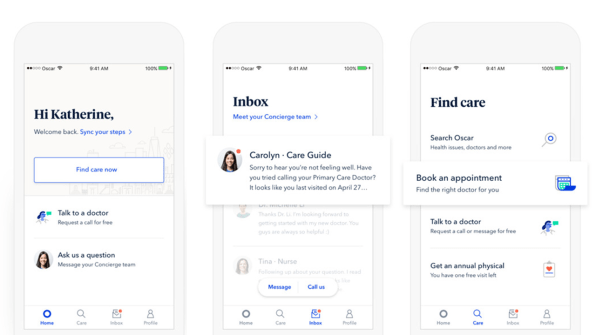Great UX abounds. How will UX designers continue to prove their value?
When I started the digital design agency AJ&Smart in 2011, UX design was still so misunderstood that I spent the next three years just explaining to my clients what it actually was and why it was valuable (while also defining it to myself). It was also extremely difficult to hire good UX designers, as there was nowhere to really learn what was required for the accelerating digital product world.
The UX designer role itself was a tantalizing combination of many older job titles, like information architect, interaction designer, and many others. UX designers were in high demand and great UX design was a competitive advantage for the companies that managed to jump on board. Just think about Uber.
We would discuss “responsive design” and screen sizes on a daily basis while others looked on in awe. We’d debate endlessly over whether a hamburger menu was better than the standard nav bar. These conversations could derail any other topic, because we were the UX designers and we alone understood the user. Any conversation could be ended with a simple “Because: UX.” We were on fire. We walked around like we owned the place, because we did. Let’s call this era from around 2010 to 2017 the Golden Age of UX.
Today, high-quality UX and UI design are commodities. An easy-to-use, delightful product experience isn’t just something users want, it’s what they expect. Users don’t blame themselves anymore when they get stuck, they blame your company. Companies, from banks to insurance startups to tech giants, have gotten better at delivering a great user experience and no longer need to be convinced of its value.
“GOOD ENOUGH” IS EASIER THAN EVER TO ACHIEVE
It’s easier than ever to create baseline “good” user experiences. In 2017, designers can start with robust design systems and patterns from companies like Google (see Material Design) and without a huge amount of effort, have something people will be familiar with.
This is not to say that extremely skilled UX/UI designers are no longer important. It’s more to say that the juniors of today now have access to tools and patterns which bring them extremely close to the skillset of the seniors of the last decade.
The problem is that if you’re looking for a long, fruitful career, “good enough” is not enough.
IT’S NOT ENOUGH TO UNDERSTAND THE USER, YOU NEED TO UNDERSTAND THE BUSINESS
During the Golden Age of UX, designers were given a free pass on understanding the intricacies of the business behind the product they were working on. In the Golden Age it was enough just to understand the needs of the user. The user was all important and anything that got in the way of the user having the best experience imaginable was considered to be detrimental to the success of the product (from the designer’s perspective).
The problem: Now that great usability, beautiful UI, and lovely, delightful animations are a given (for companies that want to play the game), it’s easy for UX designers, once considered an integral part of the product strategy, to fall into pure production roles. Production roles, even those requiring great levels of skill, are always easier to replace and automate than strategic ones, so the UX designer of the future is going to have to transform and grow into something different if she wants to continue to have a say in product decisions.
To make this transition from UX designer to “product designer,” there are three important things to understand: strategy, growth, and marketing.

1. UNDERSTAND PRODUCT STRATEGY
How does the product you’re working on connect to the other products and services within your company? Is the product purely a data collector for the core business? How does your company want to leverage its assets to beat its competitors who have a head start?
Strategy is a notoriously vague term, so instead of trying to explain exactly what it is, i’m going to refer you to this amazing primer: WTF is Strategy? by Vince Law. Want to go deeper? Read these three articles about the big picture strategies of three amazing product companies, Amazon, Netflix, and Telsa.

2. UNDERSTAND GROWTH
No matter what you’re working on, your goal is likely growth of some kind. Growth can mean anything from sales growth to user-base growth. It can also mean growth of a product’s engagement numbers. Understanding what the growth metrics are for the products you’re working on is a must. “Activation,” “Engagement,” and “Re-engagement” are words you’re going to need to get familiar with. When you understand growth metrics and strategies for the products you work on, you’re going to be able to create solutions that are not only good for your users, but help push the business in the right direction.
Here are some resources I would recommend checking out to understand growth as a topic a little better:
- Growth Hackers: This features case studies and growth experiments. It’s a good primer on the keys to a successful product.
- Hacking Growth: Written by Sean Ellis, Hacking Growth is the best introduction and most concise list of case studies I’ve read on the topic. Read this, and you’ll instantly understand why the topic is so important to business (and you’ll instantly sound smarter around product managers).

3. UNDERSTAND MARKETING AND AWARENESS
If there’s one thing designers hate more than growth and sales, it’s marketing. It is crucial, however, to have a basic grasp of the concept and the current state of marketing as a topic if you want to be a useful member of a product team. You don’t need to be a marketing pro or anything, just make yourself aware of it as a topic. Here are some resources I find useful:
Product Marketing for Pirates. This is Dave McClure‘s classic crash course in product marketing. Download the PowerPoint, scan the terminology, and you’ll already have most of the lingo you need.
Noah Kagan’s YouTube channel and blog. Noah Kagan is the king of product marketing and his delivery style is easy to digest. His YouTube channel is a treasure trove of product marketing advice and his blog has years of great posts to dig through.
–
[Featured Photo: Jurgen Ziewe/Getty Images]
This article first appeared in www.fastcodesign.com
Seeking to build and grow your brand using the force of consumer insight, strategic foresight, creative disruption and technology prowess? Talk to us at +9714 3867728 or mail: info@groupisd.com or visit www.groupisd.com

